V-2 Rocket, Meillerwagen, Hanomag SS100
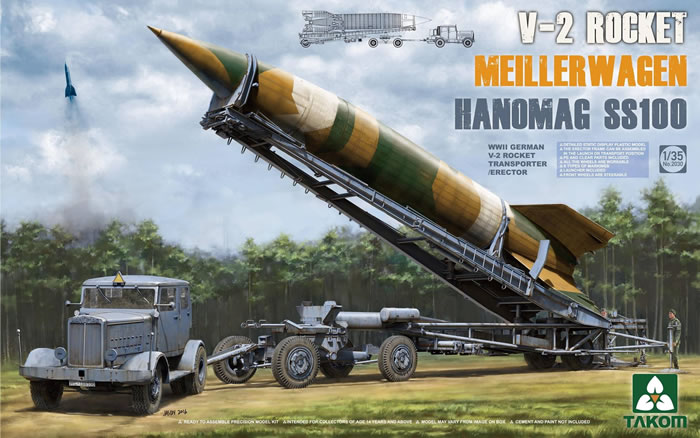
Takom, 1/35 scale
Reviewed by
James Hatch

Takom's 1/35 V-2, Meillerwagen, Hanomag kit
is available online from Squadron.com for only $73.99!
Background
The V-2 (German: Vergeltungswaffe 2, "Retribution Weapon 2"), technical name Aggregat 4 (A4), was the world's first long-range guided ballistic missile. The missile with a liquid-propellant rocket engine was developed during the Second World War in Germany as a "vengeance weapon", assigned to attack Allied cities as retaliation for the Allied bombings against German cities. The V-2 rocket also became the first artificial object to cross the boundary of space with the vertical launch of MW 18014 on 20 June 1944. Research into military use of long range rockets began when the studies of graduate student Werner von Braun attracted the attention of the German Army. A series of prototypes culminated in the A-4, which went to war as the V-2. Beginning in September 1944, over 3,000 V-2s were launched by the German Wehrmacht against Allied targets during the war, first London and later Antwerp and Liège. According to a 2011 BBC documentary, the attacks from V2s resulted in the deaths of an estimated 9,000 civilians and military personnel, and a further 12,000 forced labourers and concentration camp prisoners died as a result of their forced participation in the production of the weapons.
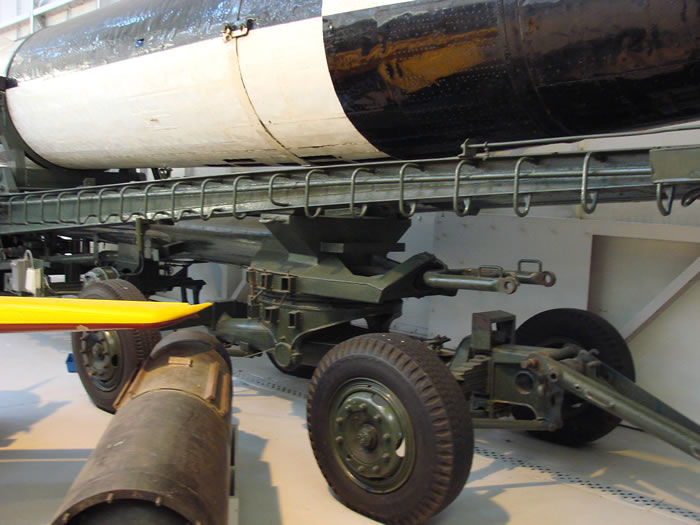
The A-4 used a 74% ethanol/water mixture (B-Stoff) for fuel and liquid oxygen (LOX) (A-Stoff) for oxidizer. At launch the A-4 propelled itself for up to 65 seconds on its own power, and a program motor controlled the pitch to the specified angle at engine shutdown, after which the rocket continued on a ballistic free-fall trajectory. The rocket reached a height of 80 km (50 mi) after shutting off the engine. The V-2 was guided by four external rudders on the tail fins, and four internal graphite vanes in the jet stream at the exit of the motor. The LEV-3 guidance system consisted of two free gyroscopes (a horizontal and a vertical) for lateral stabilization, and a PIGA accelerometer to control engine cut-off at a specified velocity. The V-2 was launched from a pre-surveyed location, so the distance and azimuth to the target were known. Fin 1 of the missile was aligned to the target azimuth.
As Germany collapsed, teams from the Allied forces—the United States, the United Kingdom, and the Soviet Union—raced to capture key German manufacturing sites and technology. Wernher von Braun and over 100 key V-2 personnel surrendered to the Americans. Eventually, many of the original V-2 team ended up working at the Redstone Arsenal. The US also captured enough V-2 hardware to build approximately 80 of the missiles. The Soviets gained possession of the V-2 manufacturing facilities after the war, re-established V-2 production, and moved it to the Soviet Union.
Historical summary courtesy of Wikipedia.
The Kit
This is actually the second Takom release of the V-2, with the initial kit containing just the rocket itself. This more comprehensive boxing contains not only the V-2 Meillerwagen that was designed to carry and cradle the rocket, but also the Hanomag SS100 heavy road tractor. Lastly, if you wish to display the V-2 in its deployed position, then parts are also included for the launching platform. In fact, the only thing this set really misses is the liquid oxygen and other fuelling tanks. I’d like to think we’d eventually see those.
For the moment though, let’s look at the main event.
This is a large box, and it is absolutely crammed full of plastic and other goodies, which isn’t surprising when you consider it contains three kits (four if you include the small launch platform). As with much Takom artwork, this one certainly pleases. A Meillerwagen is shown raising the rocket into position onto the launching platform whilst a previously launched weapon is seen rising into the air in the distance. One side of the box shows the Hanomag and trailer, with the V-2 in lowered position. The other has a sprue and contents map, showing that this project is no weekender.
Inside the box there are a total of SEVENTEEN light grey sprues that are all bagged individually (except for the main rocket parts), one clear sprue, one small PE fret, two packets containing a total of 15 vinyl tyres, two brass chains, and two small decal sheets. Yup, a real package!
Two instruction booklets are included. One of these concerns the Hanomag alone (as this was a separate release), and the other deals with the Meillerwagen, V-2, and the launching platform.
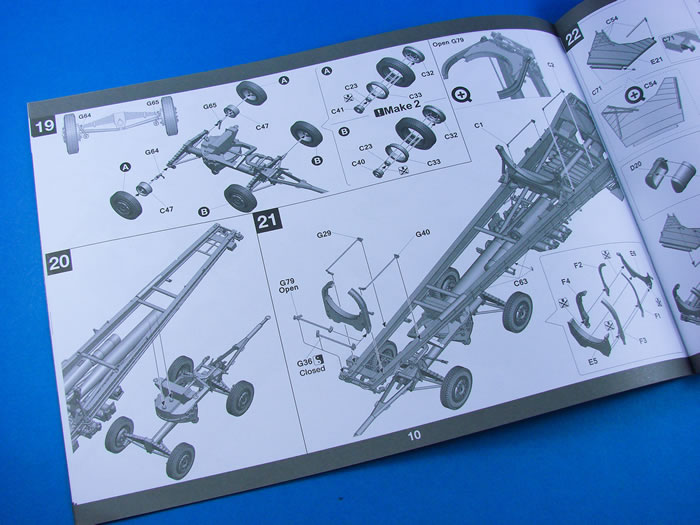
Several painting options are included for all individual components.
Hanomag
Having already seen a release of this as a standalone kit in 2016, it made total sense to include it as part of the V-2 Meillerwagen release we see here. A total of SEVEN sprues and ONE clear sprue go into the construction of this robust-looking vehicle, as well as 7 of the 15 vinyl tyres included in this release. Reading a small number of online accounts regarding the specific Hanomag release, construction appears to be a trouble-free process, and this would look to be the case when you look at the kit engineering. Despite that fact, the Hanomag SS100 is packed full of detail. Construction takes place over 26 stages within the manual, with all of these being depicted in greyscale renders that reference any RLM colours used, as well as codes for Mig Ammo paints. Mig have partnered with Takom to bring you their own colour call-outs and profiles for their releases. Four schemes are supplied for the Hanomag, all with starkly different appearances. These are for vehicles that were used at Peenemunde, Tempelhof, Mittelwerk (Nordhausen), and Belgium. I’m not really sure that all of these schemes were for use in V-2 deployment, for example, the Telmpelhof vehicle. Unless my history serves me incorrectly, no V-2 was fired from Berlin!!
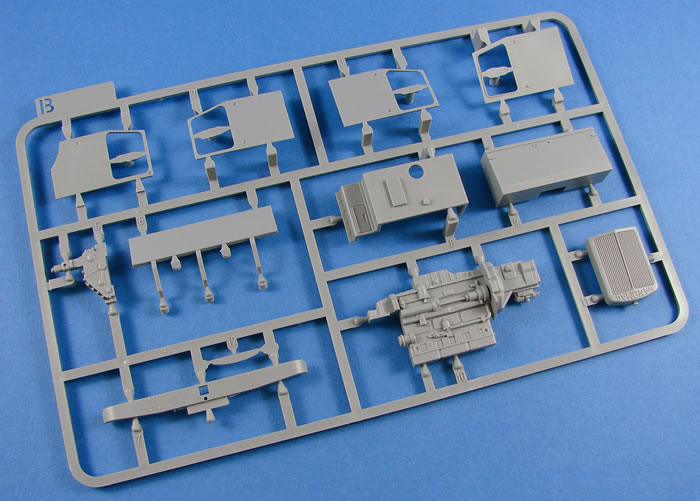
The model includes detailed chassis, with engine, transmission, exhaust system, fuel tanks, and suspension. It’s quite deceptive when you look at the sprues, as the chassis itself is constructed from a number of innocuous looking beams etc. that don’t really make any sense until you look at the in constructional context. This approach certainly adds to the parts and sprue count, and should be real fun to build. I’ll certainly be expecting this when I begin this soon for Model Military International magazine.
Like them or not, you get vinyl tyres in this release. These are all supplied off-sprue, so there is no clean-up to do with them. The seam is almost invisible, and moulding detail includes the manufacturer identifying lettering on the side of them. Kit design allows the front wheels to be positioned together via a working linkage.

Cab detailing is very good, and also quite simplistic, as is commensurate with the real thing. It appears that the doors can be posed in the open position, but there are internal door panels that are fitted when the external doors are secured within the frame. Manual illustration doesn’t show an optional position for the doors, other than closed.
Meillerwagen
At first glance, this looks to be a daunting-looking project, but having seen one of these being built on YouTube, and thanks to some nice engineering and quirky construction, it appears that you end up with something quite complex in appearance, but relatively easy to build. There are six sprues associated with this vehicle, although not exclusively. There are some parts on them associated with the launch platform too, which appeared to have been cut down for the release of the separate V-2 rocket in 2016. Here, those sprues are included in their un-butchered format.
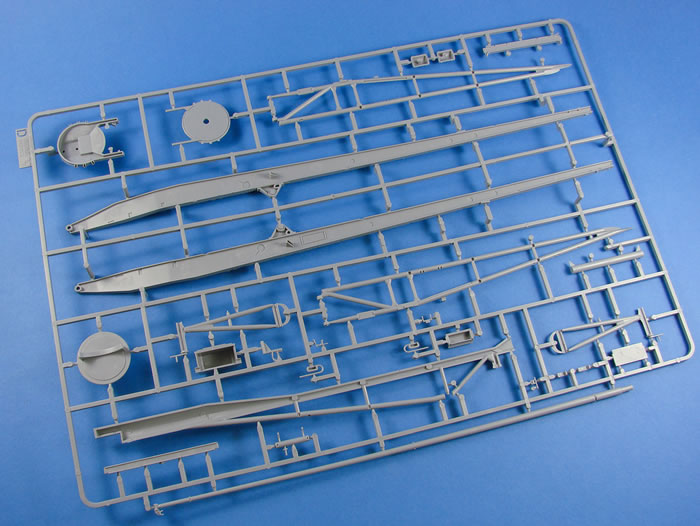
Another twenty-four steps are given over to the construction of this behemoth, with that figure doubling or trebling if you look at the various sub-assemblies contained therein. These stages are shown in a separate manual to the Hanomag, and also containing illustration for building the V-2 and launching platform. As with the Hanomag, multiple colour options are provided for the Meillerwagen. These are for two machines that operated in Holland in 1944, with one being overall grey, and the more attractive unit carrying the Dunkelgelb, Olivgrun and Shokobraun (Schokoladenbraun?) colours. I don’t know if you’d need to pair the Meillerwagen colour with the Hanomag. It would be quite attractive if you could use odd colours and certainly some visual stimuli.
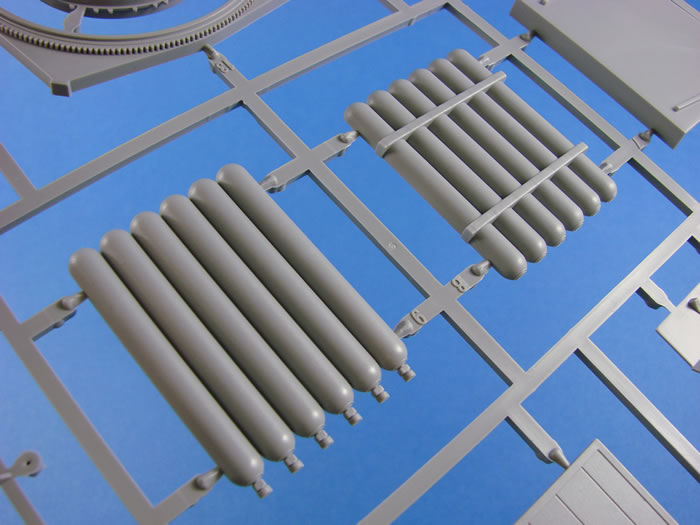
The Meillerwagen can be built with the lift frame either raised or lowered, and the upper collar can be posed in an open or closed position. The frame contains operating platforms that can be suitably posed, and with these are included two lengths of brass chain for the crew safety barrier.

Eight further vinyl tyres are included for the construction of the Meillerwagen. A series of Hydrogen Peroxide tanks are included within the frame.
A single PE fret provides a small number of parts for the Meillerwagen, and shares itself with a few small details designated for the rocket.
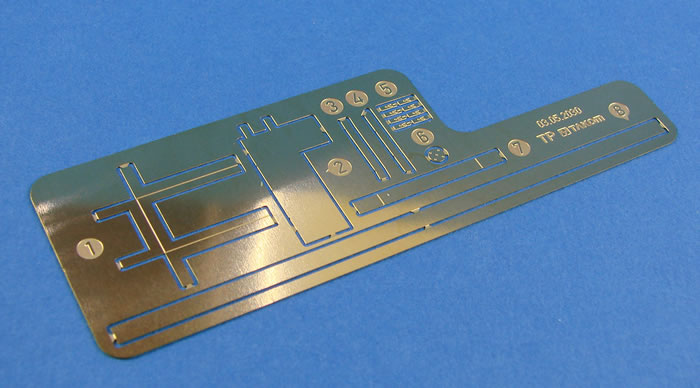
V-2 and Launching Platform
I suppose it’s ironic that the real star of the show is the one with the least number of parts, but that really doesn’t matter, as detail is every bit as good as that of the Hanomag and Meillerwagen. The rocket comprises of separate front and rear sections, supplied as halves, with the connection ring that fits between them, as per the real thing. Into the lower halves fit the exhaust nozzle and the graphite steering paddles that sat in the rocket’s thrust gases, guiding the V-2 onto its path of destruction.
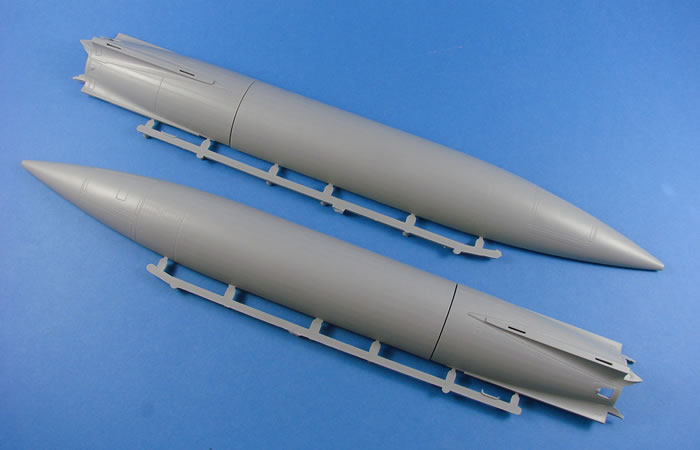
The rocket fins are separate parts, to be plugged into the lower half. Without a doubt, even in 1/35 scale, this is an imposing creation. Externally, detail is given as fine panel lines and rows of recessed rivets. Cleaning up the seams will mean that some of this may be lost, so make sure that Rosie is available to put back what might disappear under a sanding stick.
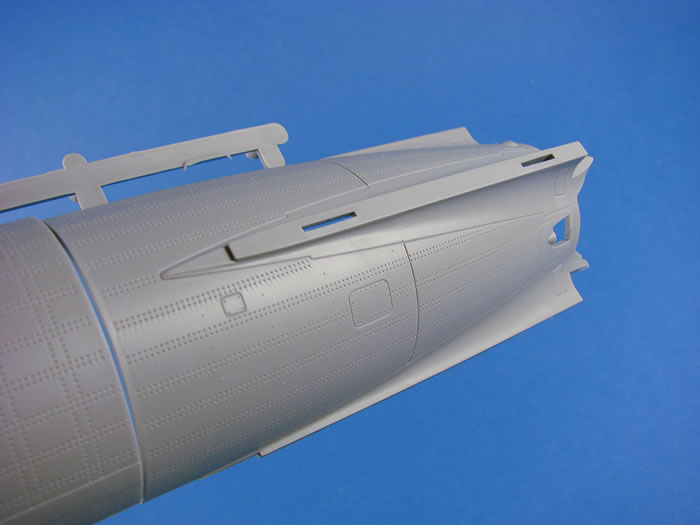
The rocket is supplied on two sprues, with the main body parts being separate and in their own clear sleeves. PE is supplied for hatch latches and the strap which holds the rocket onto the Meillerwagen whilst in transit and being erected. There are six colour schemes for the rockets, ranging from those built for deployment and test. Whilst there are camouflage options, I still prefer the black/white quartered unit whose colours were apparently to gauge telemetry when launched.
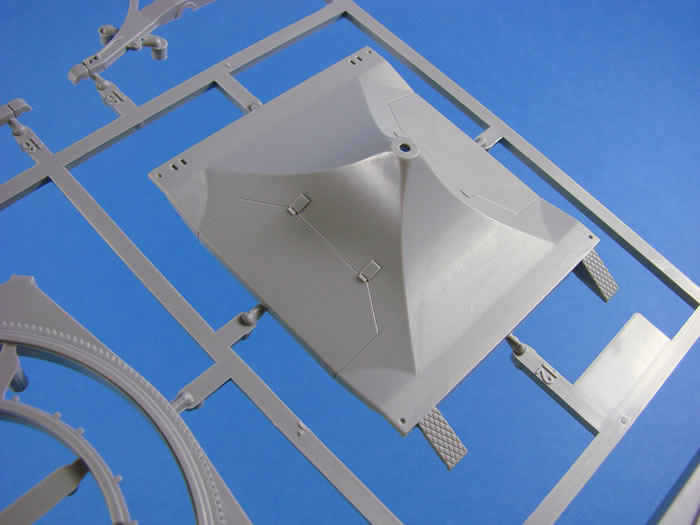
Lastly, the launching platform. As the Meillerwagen is raised, the rocket base is located to the launching platform before the vehicle moves away and the rocket is ready to fire. This little kit comprises the thrust table with its scalloped sides to equally deflect the thrust outwards, manually-operated jacks, and a geared table onto which the rocket sits. A total of around 40 parts comprise this unit.
Decals
Two small sheets are included for the Hanomag and rocket. These simply contain things such as serials and stencilling for the rocket, and military registration plates and instruments for the Hanomag.
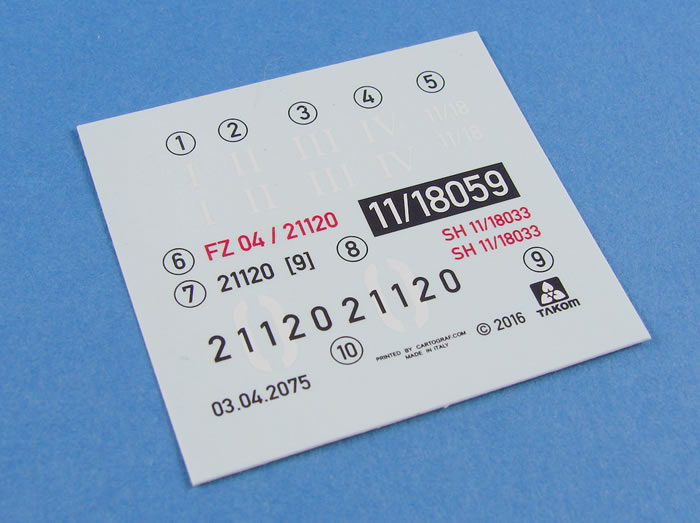
These are nicely printed by Cartograf and in perfect register.
The only things missing here are the fuelling tanker and the firing cabin. Maybe we’ll see those eventually. Having said that, this is a superb representation of the rocket and her delivery/deployment train, in the most intricate of detail.
Once you get all the sprues out of the box, you’ll be hard-pushed to get them to fit back in there, there really is so much plastic to work with.
This brings me onto the price. MBK is selling this kit for €79,50, and I think that represents excellent value for money for what is really quite an amazing kit of what was ground-breaking technology at the time, leading onto what eventually became a part of America’s space programme and the moon landings.
This is no weekend project (except maybe for the rocket itself), and I think you’ll need a little patience for the Meillerwagen, but the payoff will be a stunning model that will be very different to others on the shelf.
My sincere thanks to Modellbau-Koenig and Uschi van der Rosten for the sample reviewed here.
Review Text and Images Copyright © 2017 by James Hatch
Page Created 22 May, 2017
Last updated
22 May, 2017
Back to HyperScale Main Page
Back to Reviews Page |
